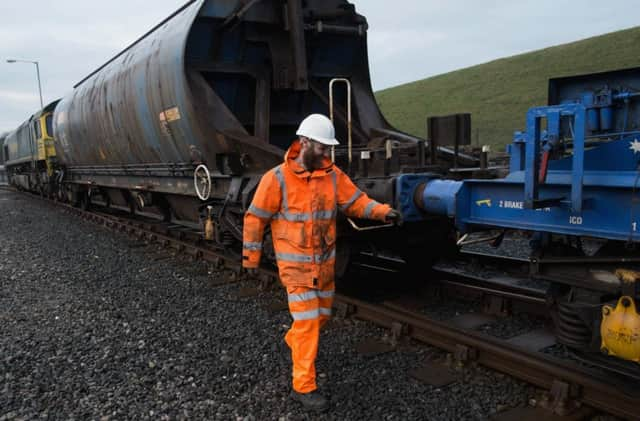Let the train take more of the strain


Everyone wants to see more freight on rail – the potential benefits to the economy, environment, climate and road safety are substantial – but in practice how can we achieve a significant modal shift from road haulage?
The terms of competition between road, rail and sea have to be fair, of course – not least in terms of providing rail-route infrastructure which is fit for modern purpose, allowing cost-effective, long trains to convey the modern generation of tall containers across the trunk rail network.
Advertisement
Hide AdAdvertisement
Hide AdHowever, good routes are not enough, as rail – like sea transport, but unlike road haulage – also needs a comprehensive network of terminals to provide access to the system.
Rail terminals fall broadly into two categories:
• Intermodal railheads, where containers trunked by rail are transferred to lorries for local or regional distribution
• Private sidings, serving ports and major industrial plants (such as open-cast coal sites, steel works, paper mills, grain distilleries, etc) and regional distribution terminals for cement, oil and other bulk commodities.
Currently, there are some 40 rail-freight locations in Scotland, of which ten are intermodal railheads, with the balance being private sidings handling coal or other bulk commodities.
The needs of the future can be hard to judge, but it is clear that, if there is to be a substantial shift from road to rail, then existing railheads will have to be expanded and upgraded – and new terminals will be needed to serve districts, regions and major industrial plants currently lacking direct access to the rail freight network. A strategic approach to expanding and upgrading freight railheads across Scotland is therefore required – and the Rail Freight Group (RFG) was consequently extremely disappointed with the outcome of the Scottish Government’s 2013-14 National Planning Framework 3 (NPF3) process and its imbalanced treatment of rail and sea freight.
The final NPF3 document endorsed three sea freight “National Developments” at ports but none for rail freight, despite RFG’s proposed National Development scoring as highly (against mandatory and optional criteria) as two of the sea freight developments – a decision which we described as “illogical, inconsistent and unfair treatment of two competing modes of transport”.
However, in belated acknowledgement of its failure to provide a level playing field in strategic planning, the Scottish Government has now set up a working party to consider the relationship between freight and planning in the future NPF4 process, in which the rail freight sector will be fully involved.
Developing new railheads and bulk terminals depends on the availability of well-sited and appropriately sized parcels of land adjacent to the current rail network. In part, this lies within the control of the rail industry, and Network Rail has had a longstanding land bank of 14 “Strategic Freight Sites” across Scotland. Some of these, such as sites in Inverness and at Keith (convenient for whisky traffic), are very well chosen – but others have been overtaken by wider trends in industrial location and rail operational economics, and need to be swapped for potentially more productive locations.
Advertisement
Hide AdAdvertisement
Hide AdInevitably, some opportunities for rail freight to win traffic from the roads will depend on utilising land which is not in rail industry ownership.
Unfortunately, Scottish Government guidance to local authorities on strategic protection for rail-connectable sites against inappropriate development is now weaker than it was 20 years ago. The current Scottish Planning Policy document says merely that “disused railway lines with a reasonable prospect of being reused as rail, tram, bus rapid transit or active travel routes should be safeguarded in development plans”, with no specific mention of rail freight and its land needs.
Experience has shown that consideration of rail-freight access must be undertaken at an early stage of industrial site development planning, since trying to retro-fit rail facilities when these have not been “passively” planned within the overall development footprint can be expensive or indeed impossible – as rail access is more constrained, for example in terms of curvature, than is the case with road haulage.
The recent granting of planning consent by Highland Council for a major expansion of the Dalcross Norboard plant (which lies adjacent to the Inverness-Aberdeen railway) – without any requirement for passive provision for future rail access – is a case in point. And south-east of Edinburgh, part of the former Millerhill marshalling yard was sold off on the basis that a new waste treatment plant on the site would generate rail freight traffic at this highly nodal location. But now plans to use rail have been scrapped.
These examples of a lack of joined-up thinking demonstrate that a strategic vision is urgently needed if we are to secure a major shift from road haulage to rail freight across Scotland, with all the economic and environmental benefits this would bring.
• David Spaven is Scottish representative of the UK’s Rail Freight Group
SEE ALSO